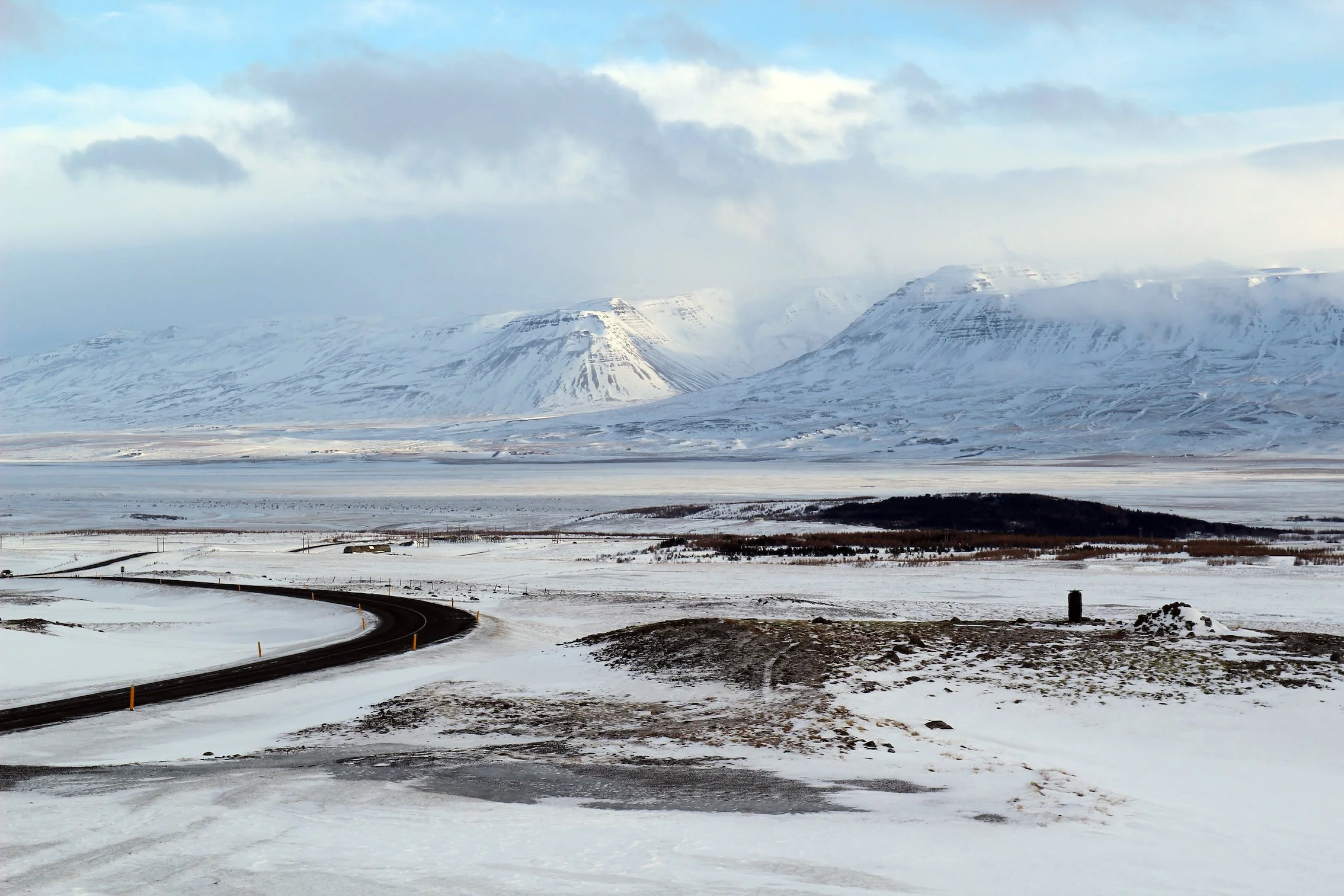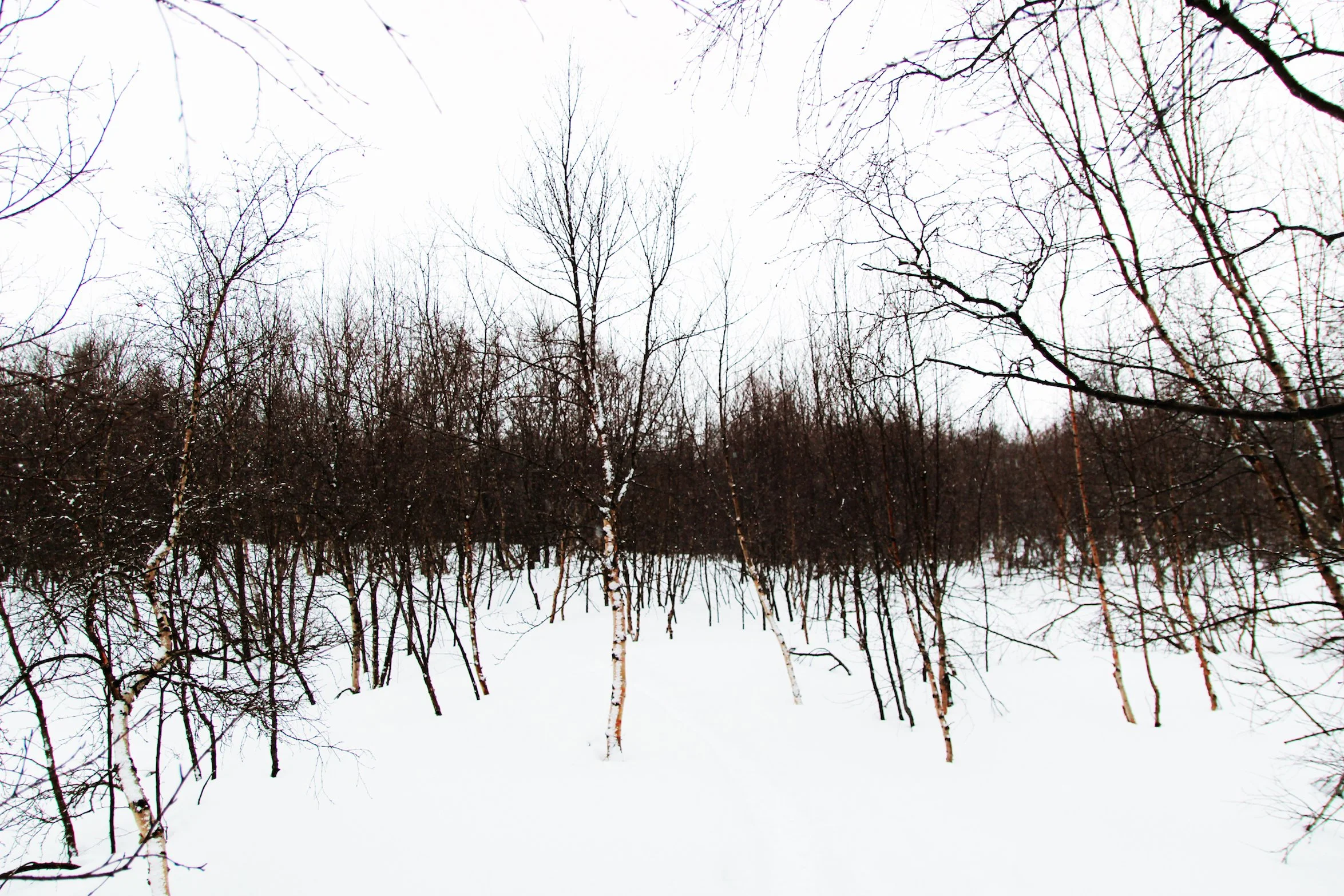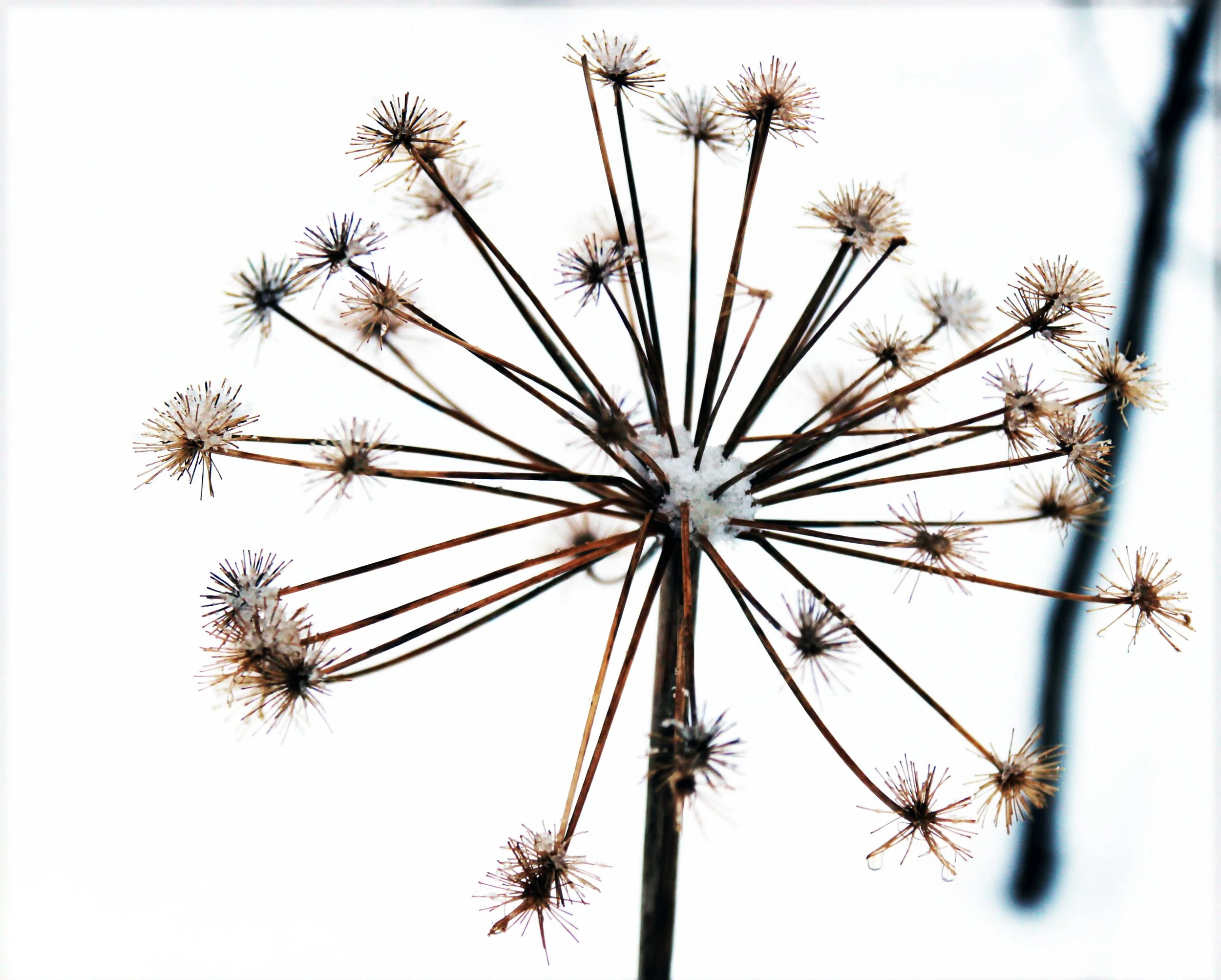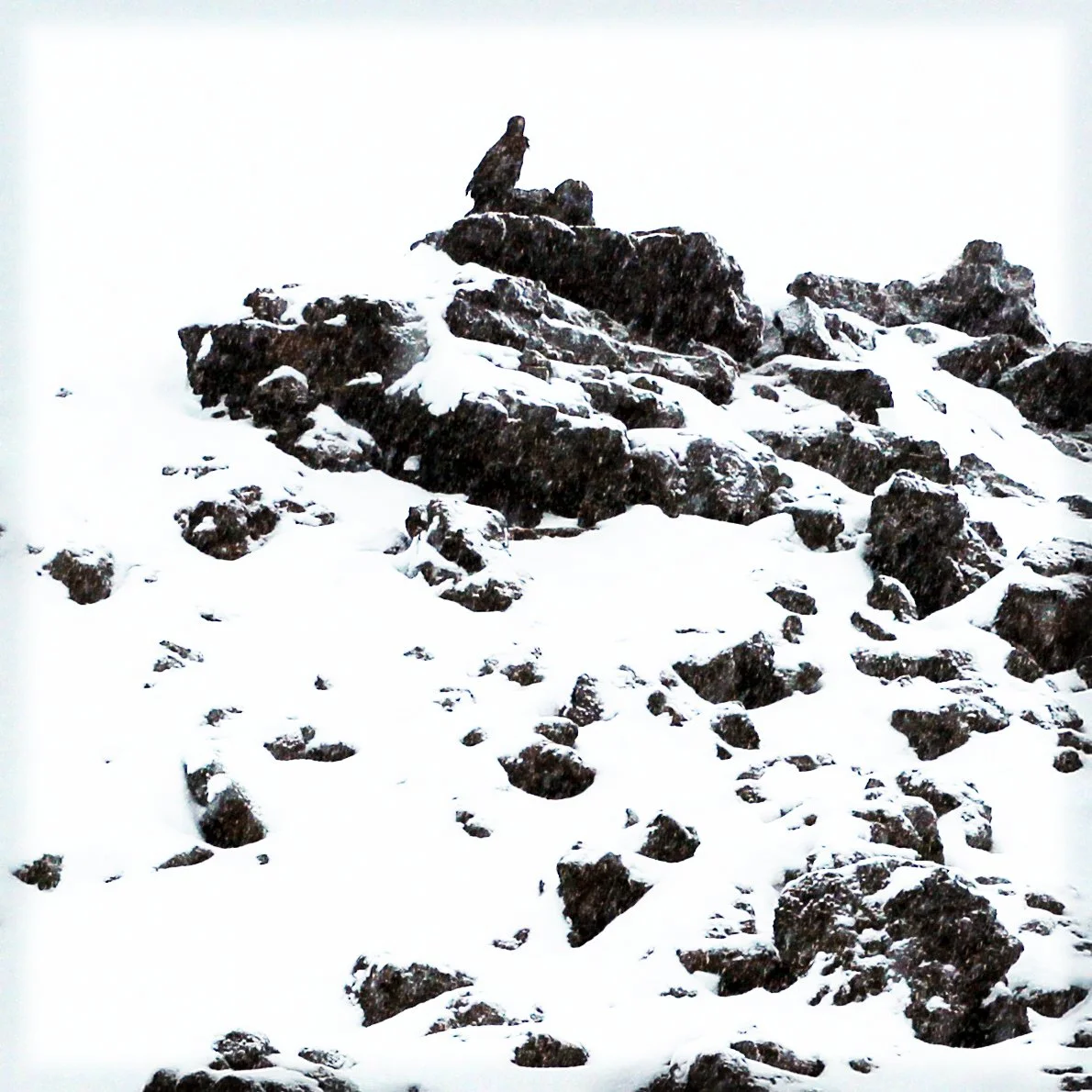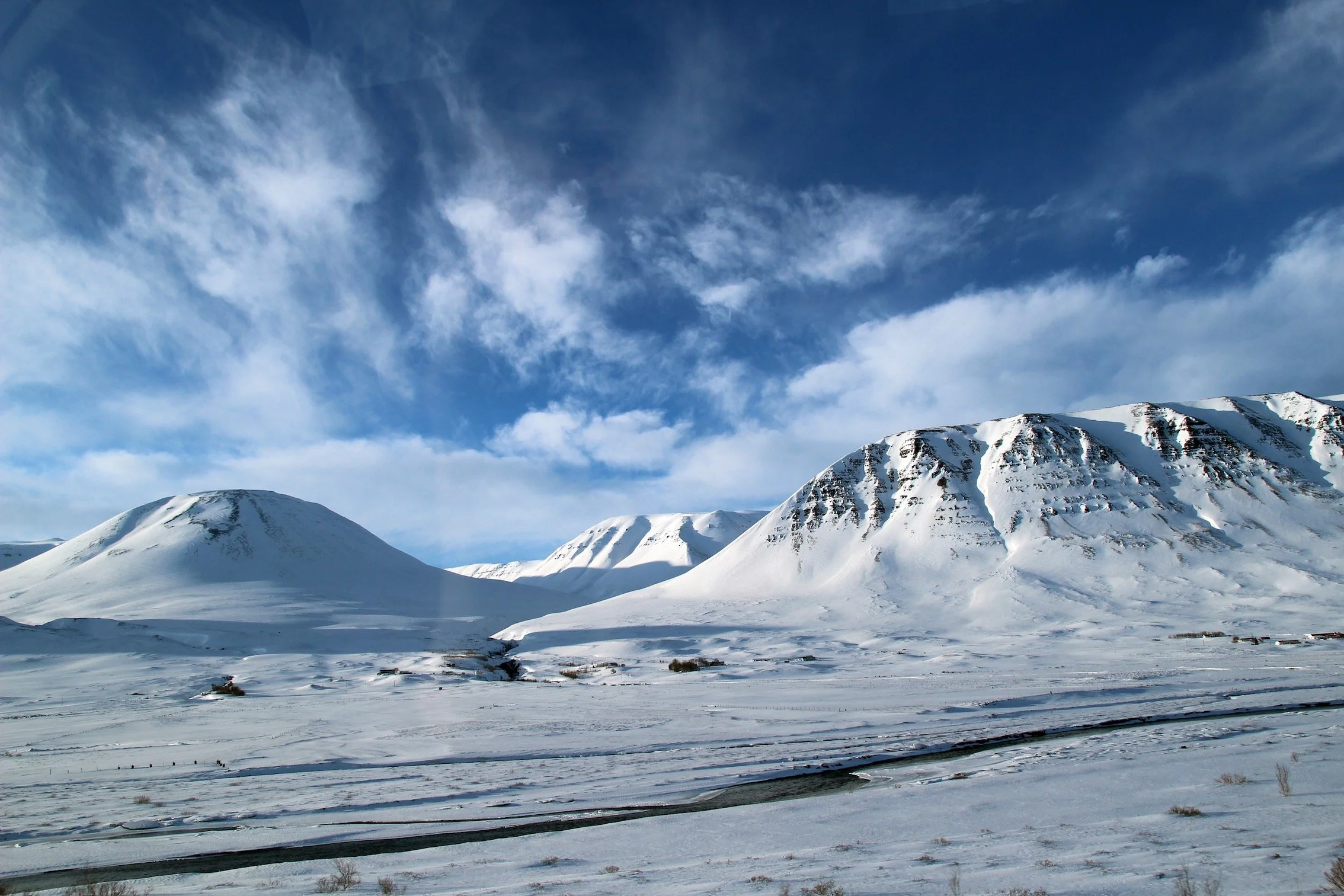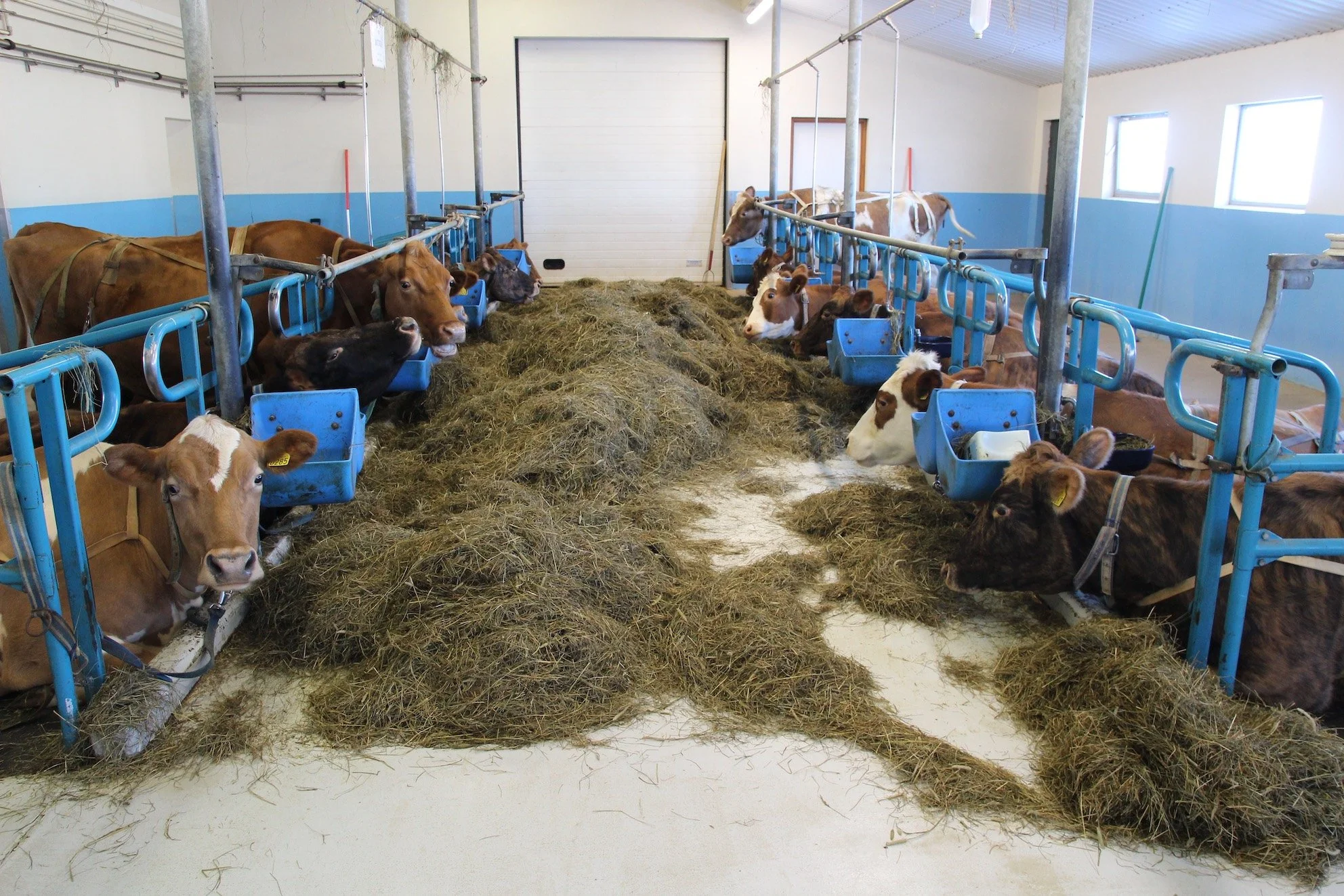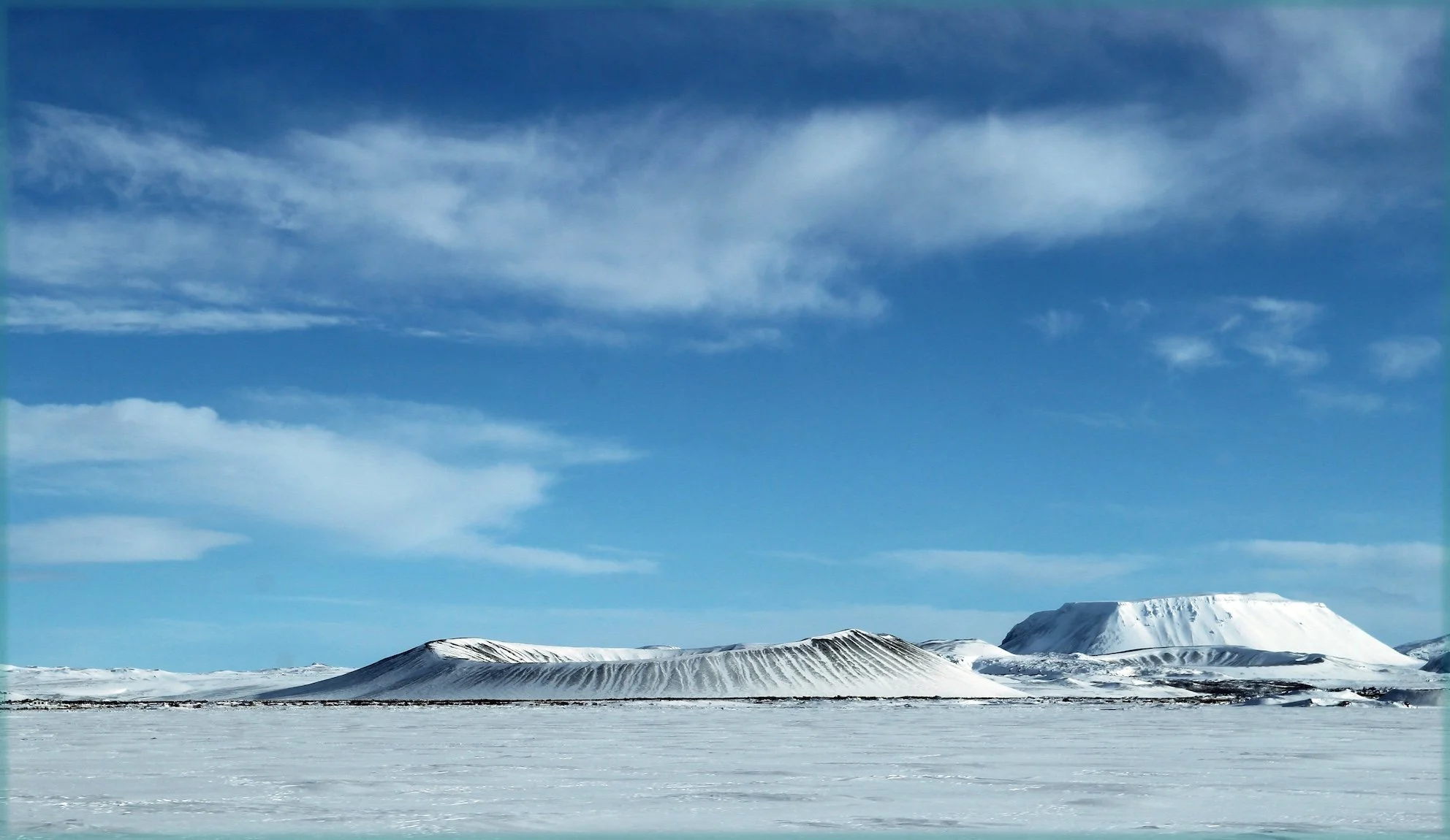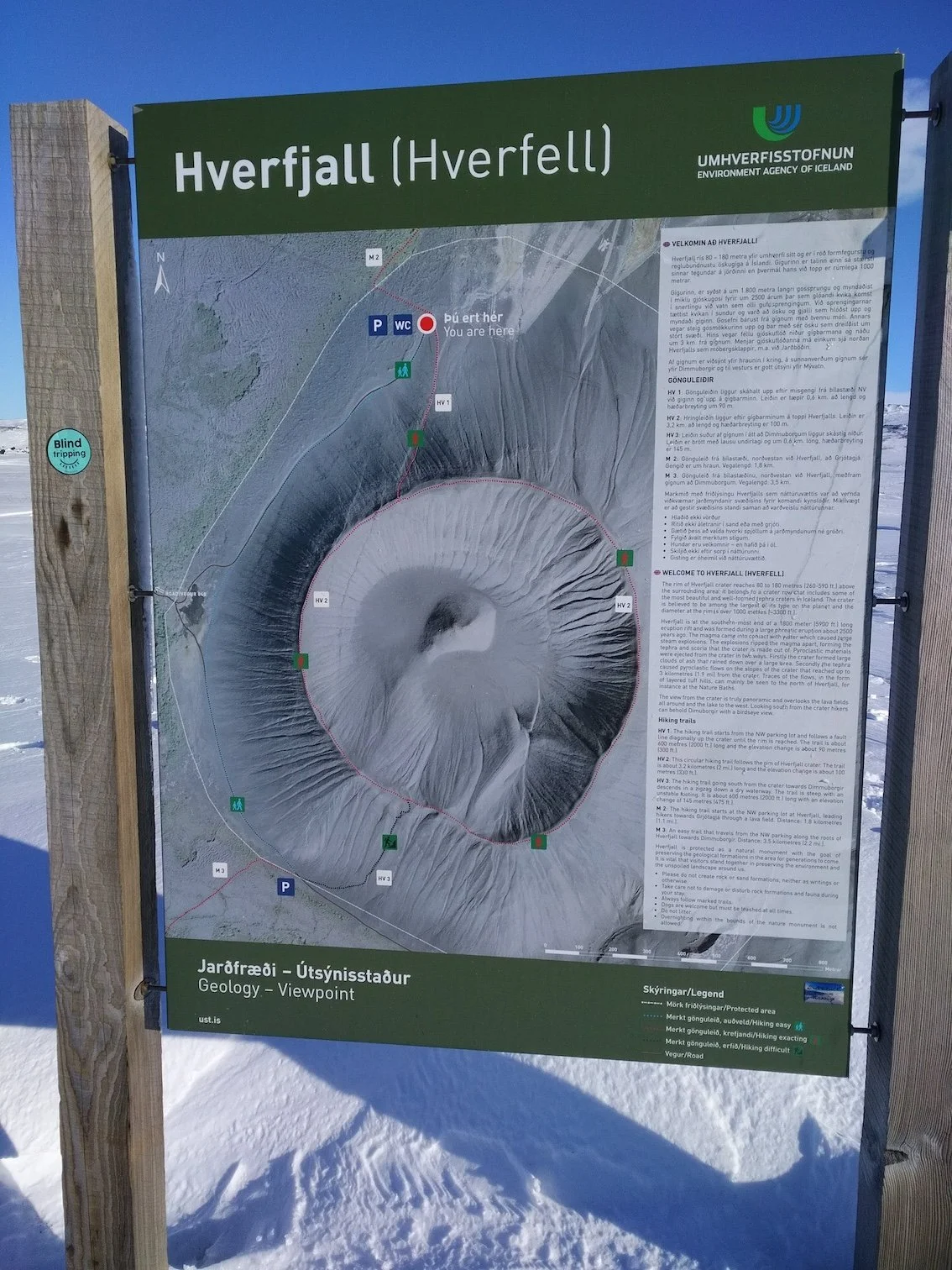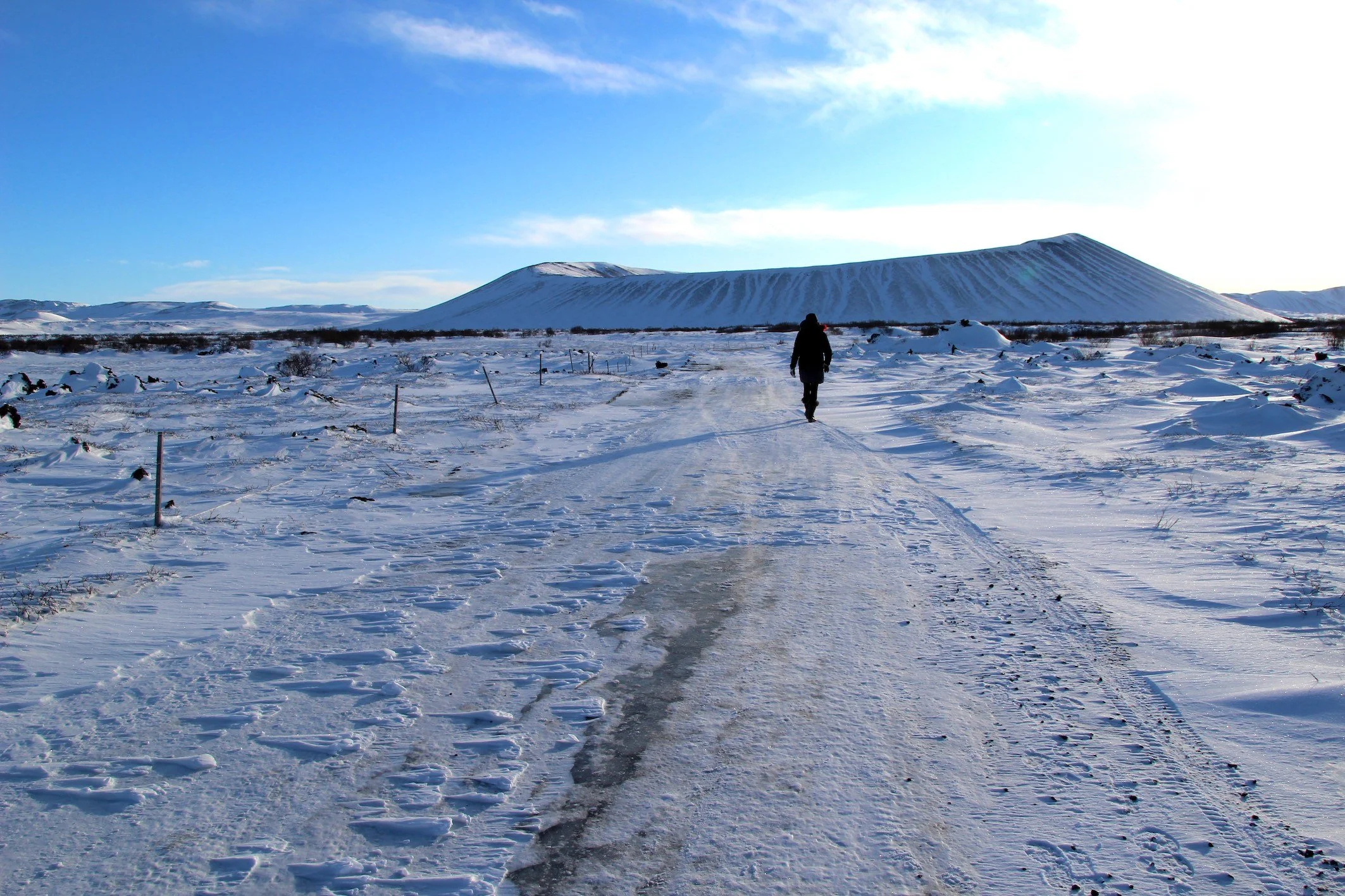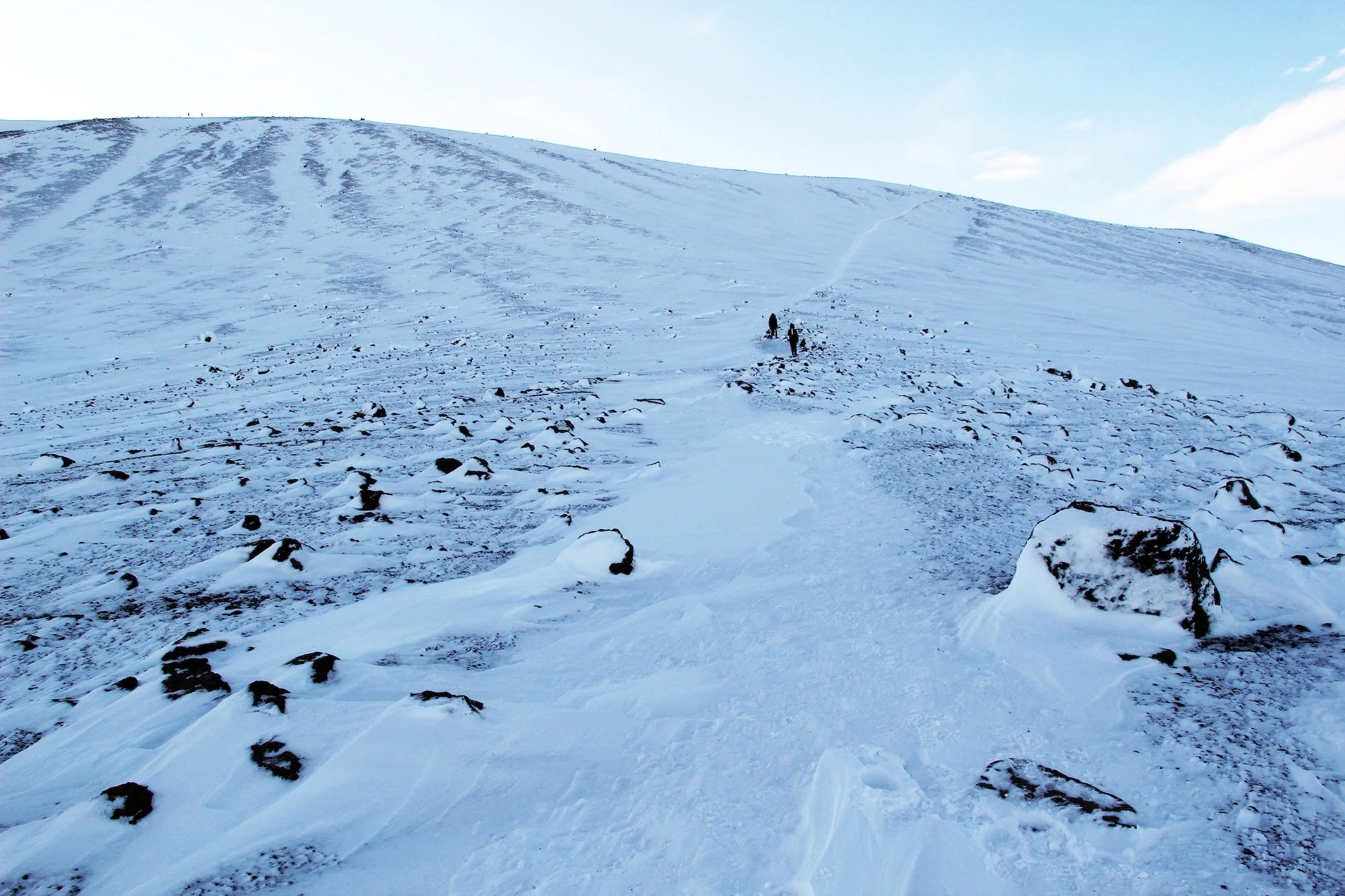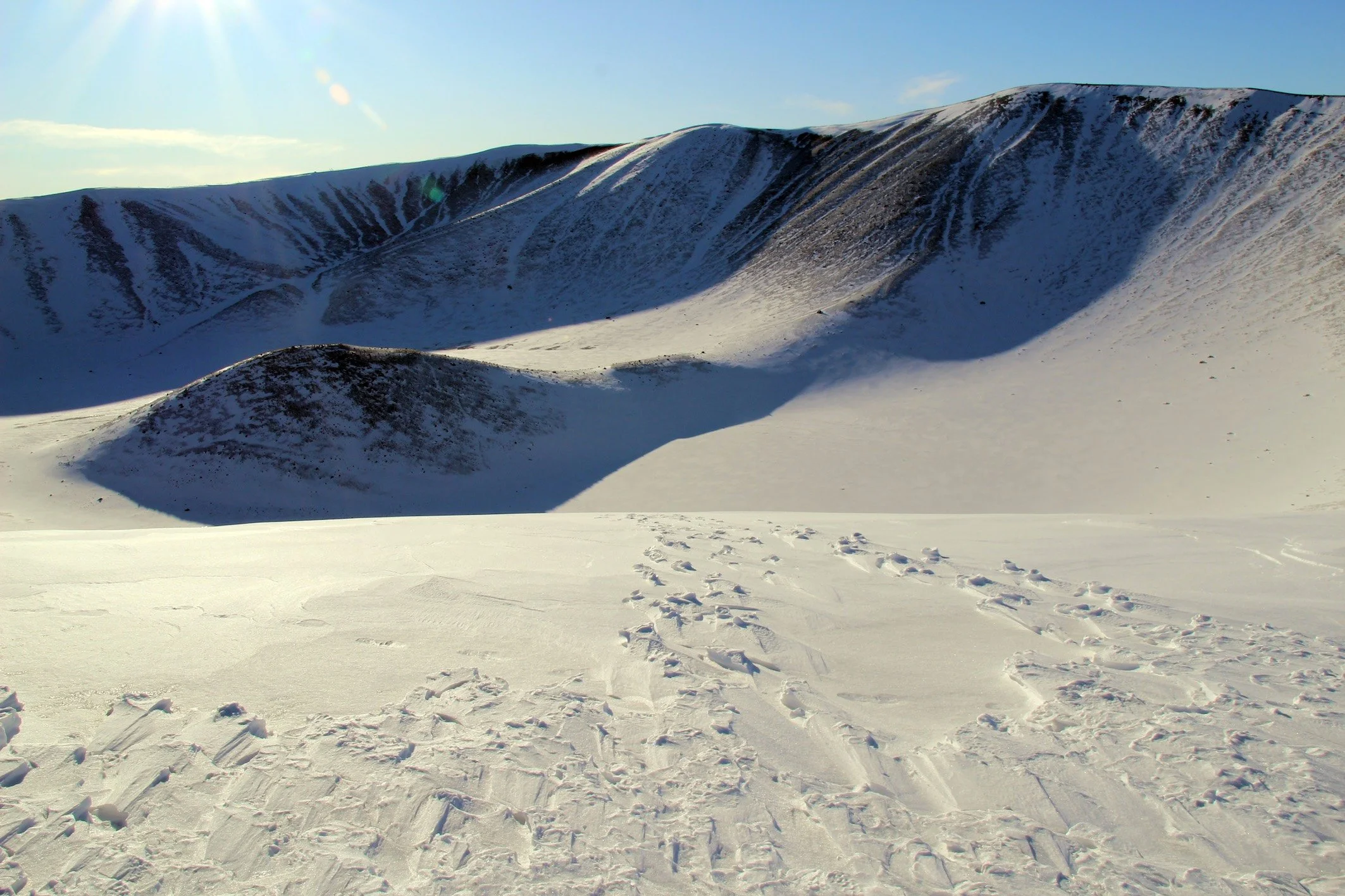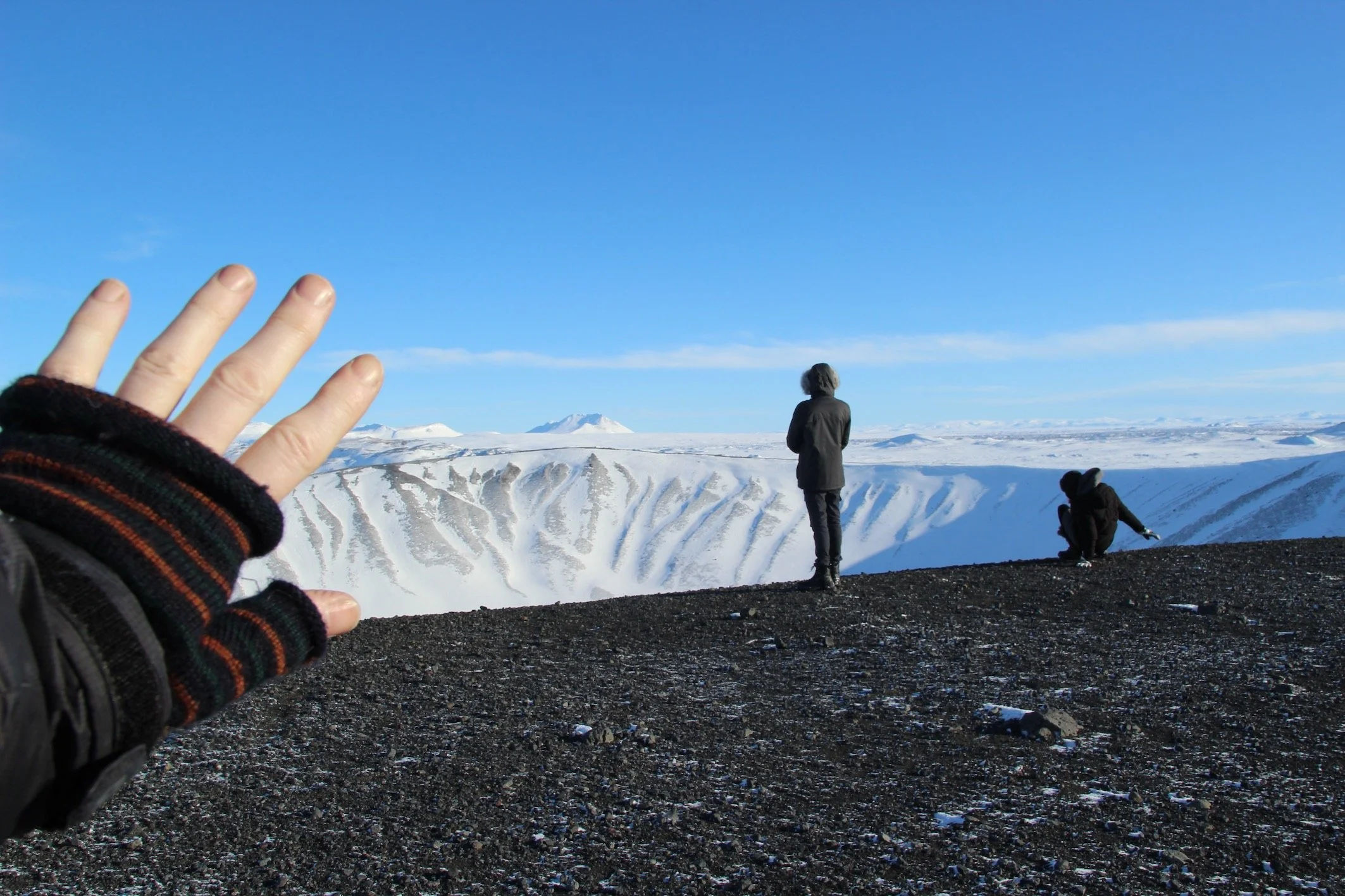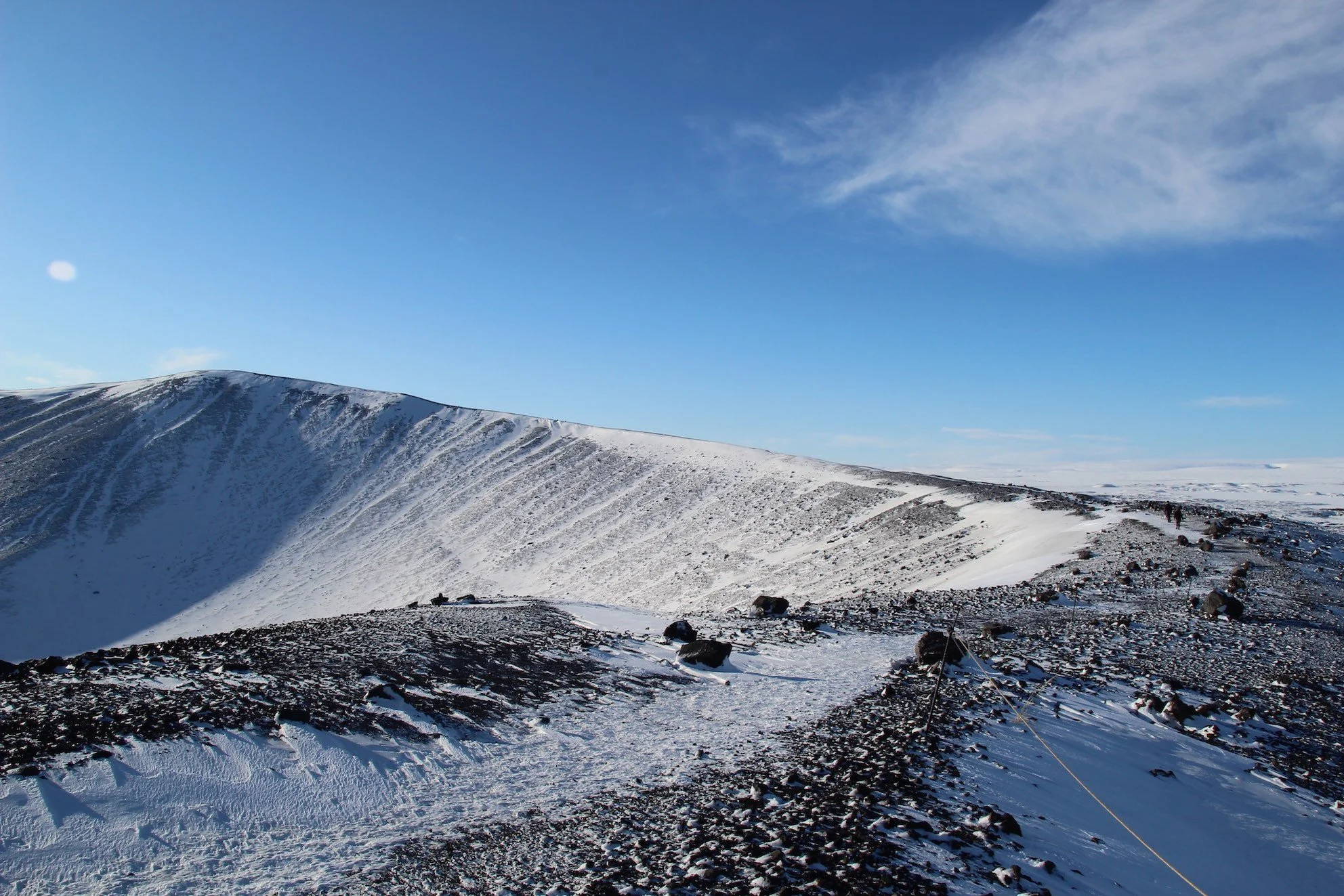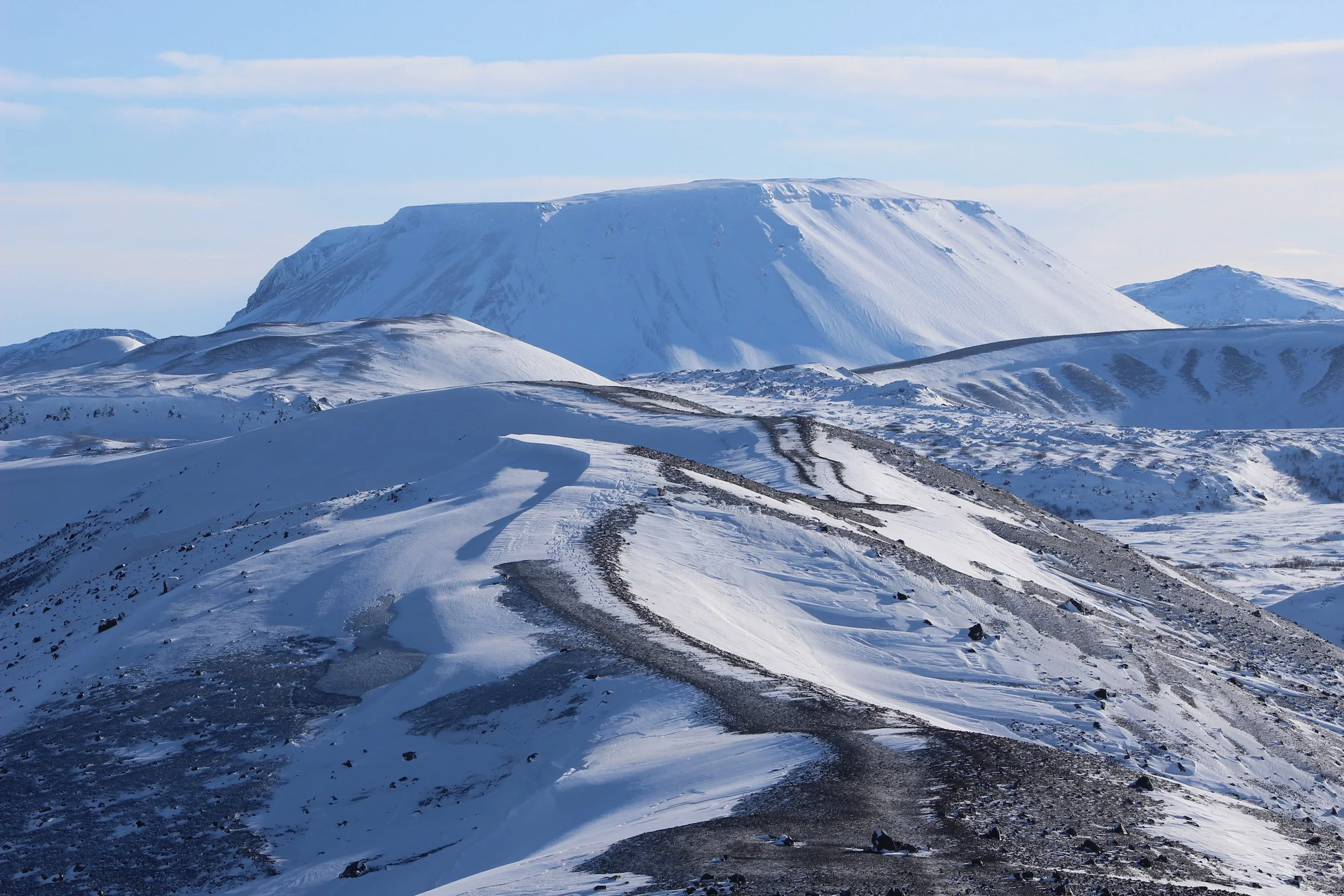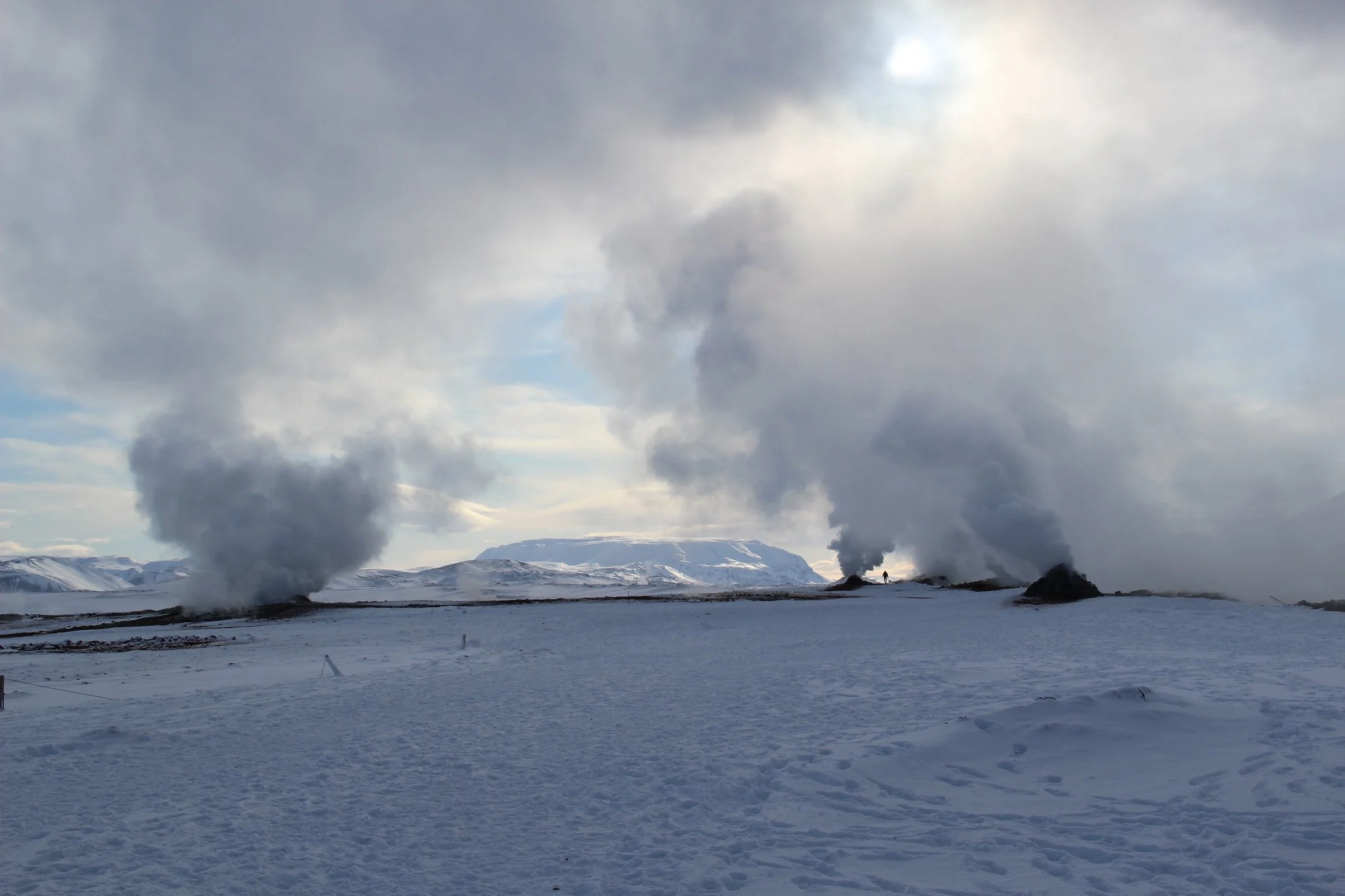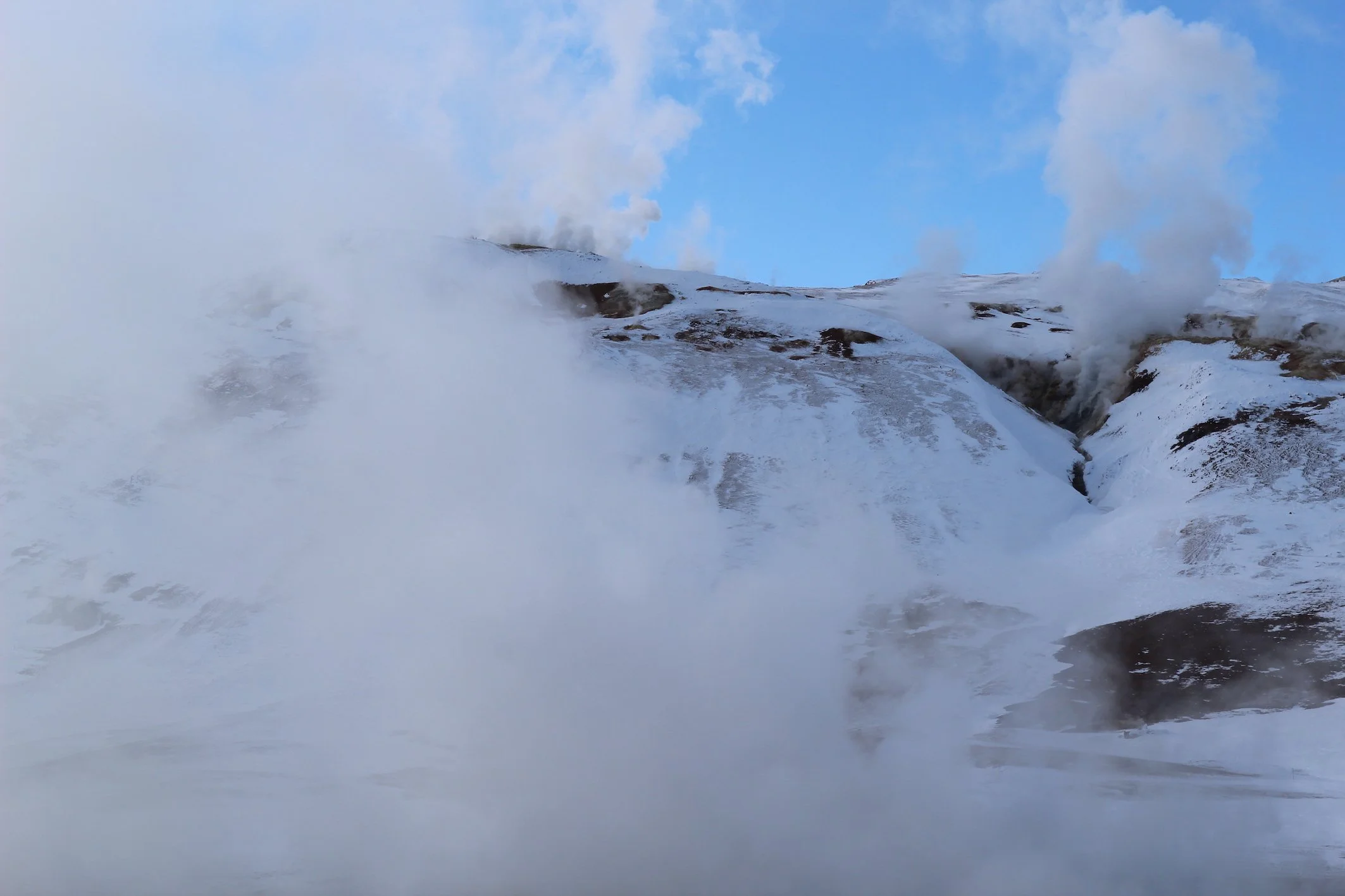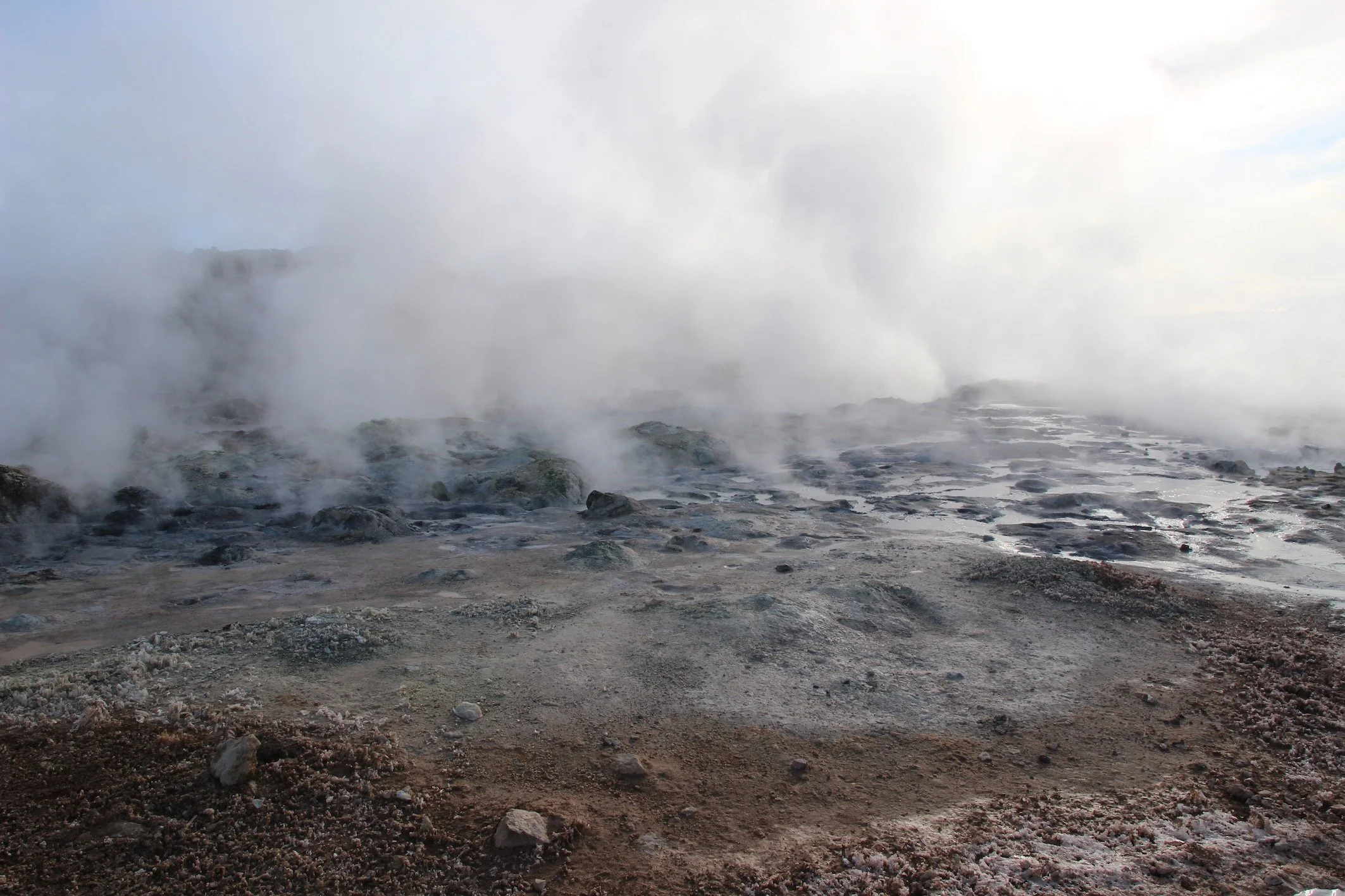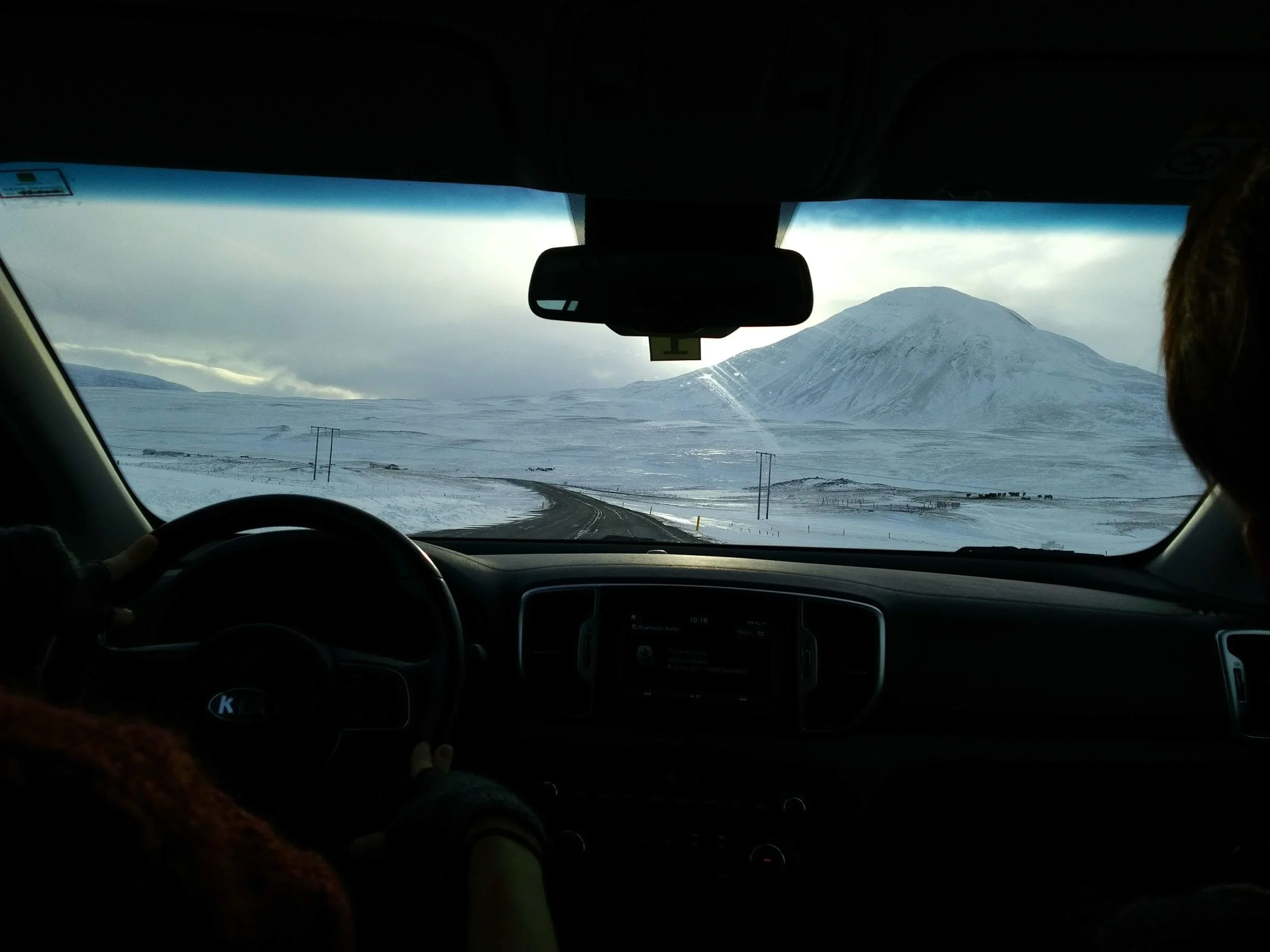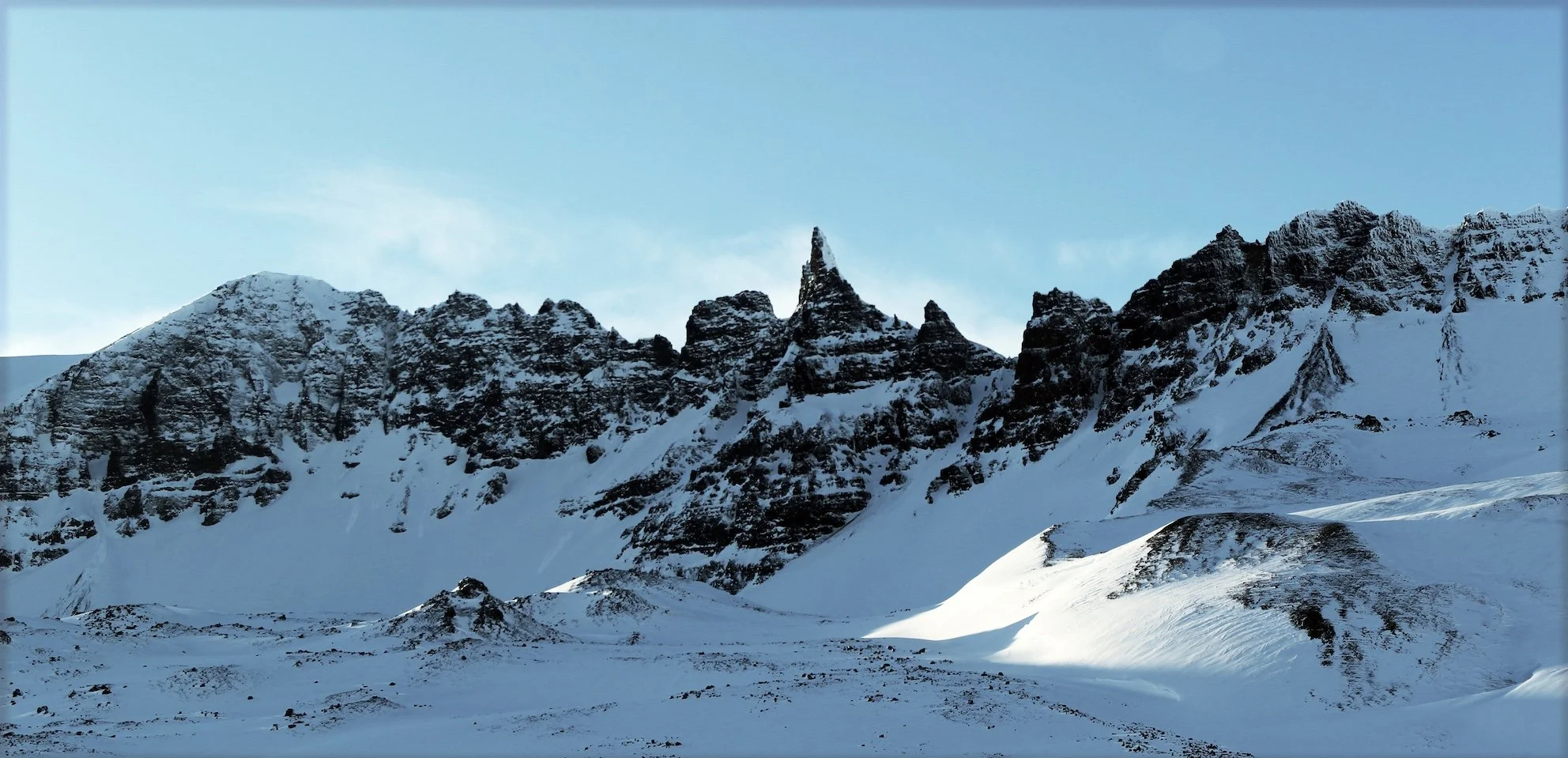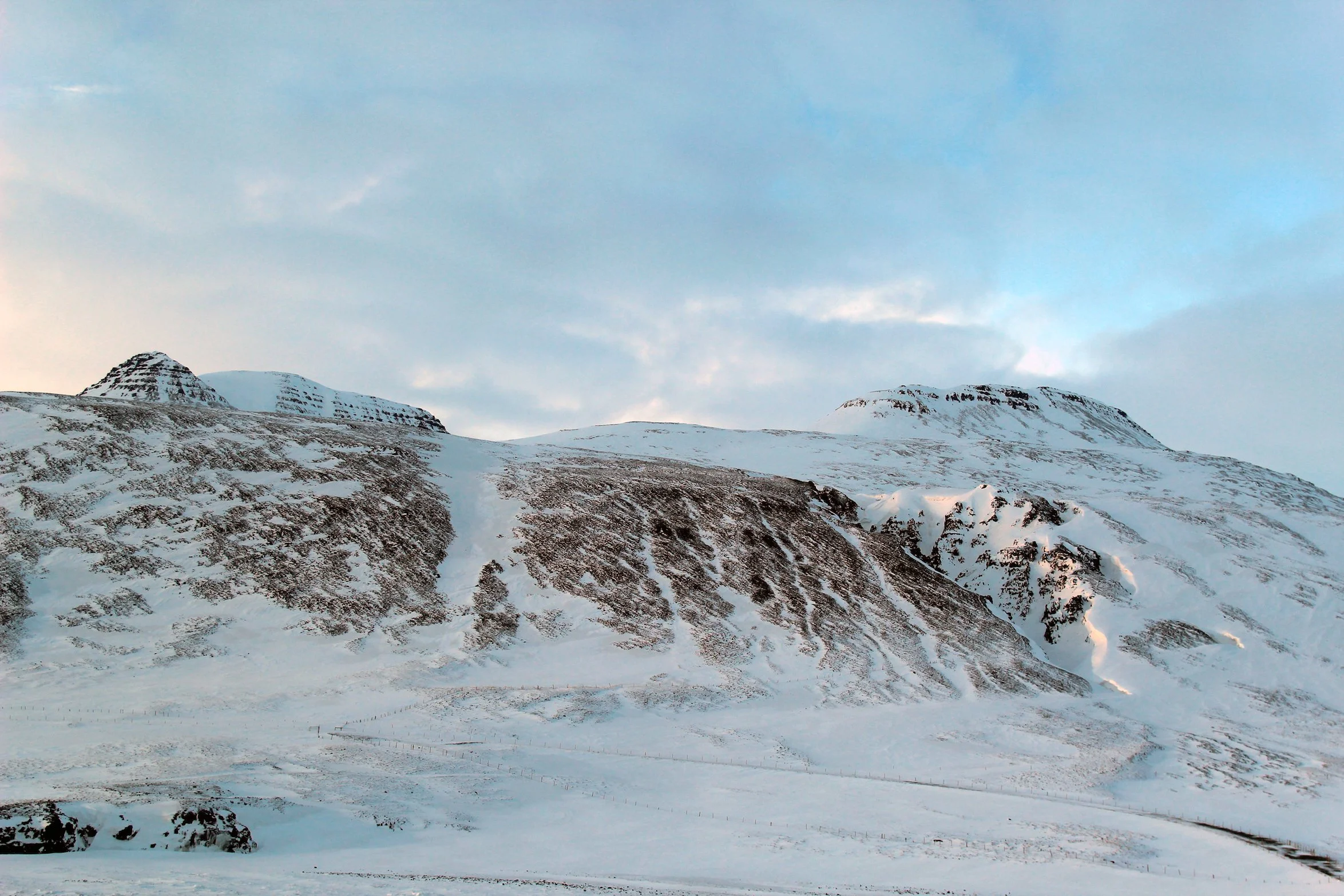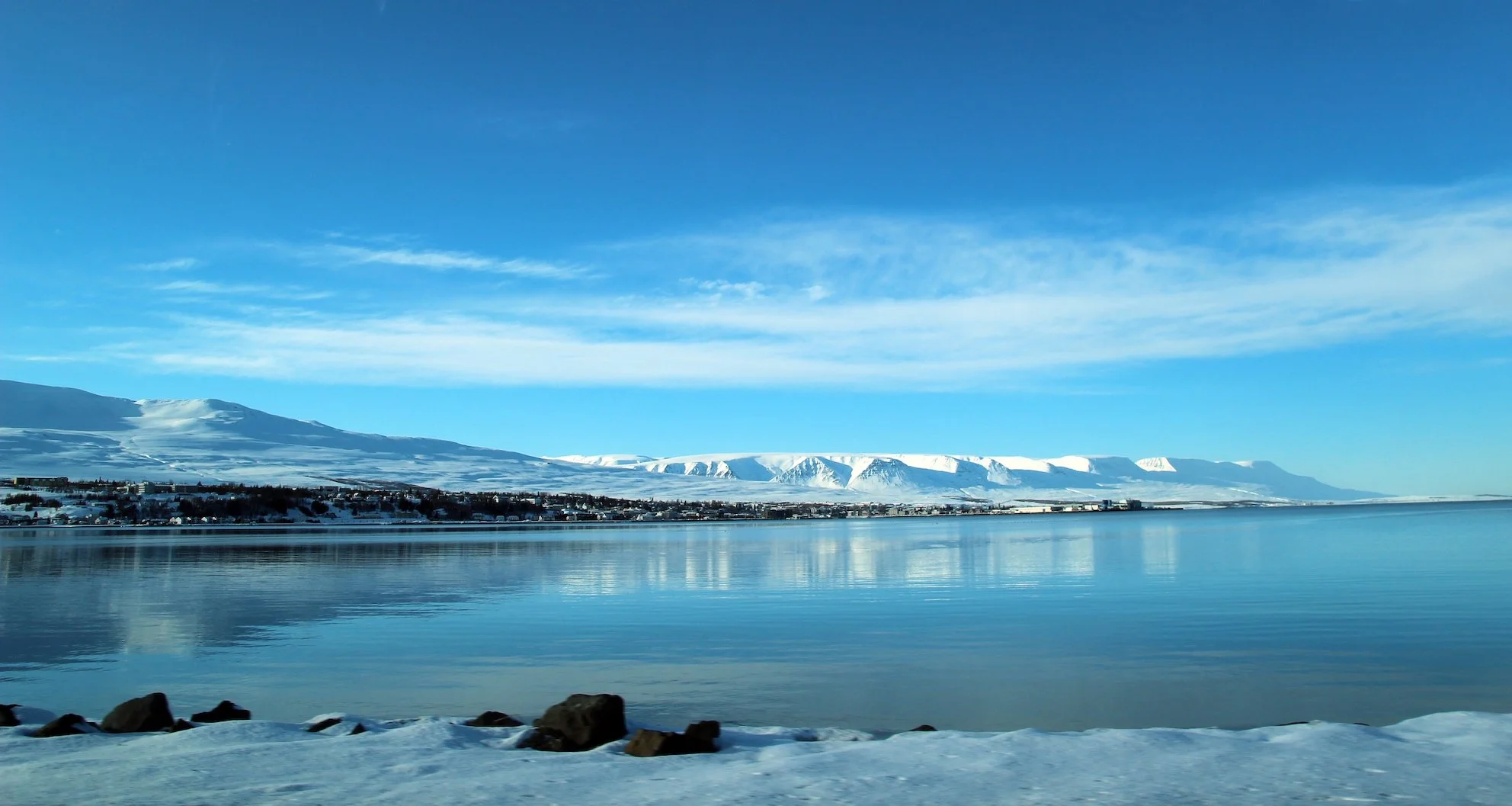Skagaströnd residency 2020: Relentless beauty - Skagaströnd to Myvatn
The road trip
We set off - the three remaining. we are an international group - one from Australia, one from the USA and one from the UK. The roads look clear, Alex driving, for which we are eternally grateful, Sue in the passenger seat, and I’m in the back. I don’t think I want to attempt to drive in winter on Icelandic roads. Snow is piled high on either side, in places ice and snow on the road, despite the regular work of the snowplough.
I think we are feeling elated to be leaving Skagaströnd for a while, to see more of Iceland’s amazing landscape. It feels like an escape. A pale sun hangs in the sky, clouds drift below and above mountain-tops, black ribbons of rock snaking upwards through glistening snow.
I can’t get enough of this place, vista after vista opening up as we head east. And so much snow and so much space!
We stop, get out of the car to stretch our legs and just to look and try to take it all in. A monument stands close to the road – not sure who it’s to – a young male figure surveying the landscape with a dog at his feet.
A board welcomes us to Skagfjördur and ask if we know that Iceland is an energy superpower. It also informs us there’s a struggle going on between inhabitants of Skagfjördur and Icelandic National grid – local people will not accept overhead cables and pylons to be erected across this land. I hope they’ll win the campaign; it would be a travesty to put 30m high pylons across this landscape.
Onwards, to stop at the Gadafoss (fall of the gods) waterfalls, where torrents of water pour over huge icicles, cascading from one pool to the next.
By the time we reach the town of Akureyri and park up for lunch it’s snowing hard. Snow collects under my crampons and I feel as though I am walking on snowballs, which effectively I am, so I abandon them.
The rest of the journey is slightly scary. Snow blows across roads that are icing up, the windscreen wipers going continuously, visibility is pretty difficult, the only respite being when we drive through the Vadlaheidigong tunnel avoiding the Vikurskard mountain passage, which at this time of year looks dangerous. Then we’re back into more heavy snow. Nevertheless we make it and check into our guesthouse - a farm where the dining area has a window into the barn where you can see the cows are milked during meals times – I am excited!.
We’re told that roads east of Mÿjvatn are now closed, so we’re pretty lucky to have reached here. Our attempt to get to the geyers is thwarted, the roads are so bad. After parking and staggering about in the snow we return to the car to turn back and go walking near a lake of clear blue water and a small wood of delicate snow-clad trees. It’s eerily quiet - the snow is so thick, sound is muffled.
The volcanic rocks circling the lake look like grotesque black frozen statues – maybe they’re trolls – they remind me of the strange misshapen sculptural figures made by the artist De Kooning.
And then I stop – I can see an eagle – I can’t quite believe it. No-one else is with me….there it is - perched above me. I daren’t move.
Perched high on top of black craggy rocks, it looks like so much like part of them I have to look several times before I realise it’s there. I feel that I’m in the middle of a scene from the Game of Thrones. I watch it surveying the ground below. What’s really annoying is that I miss photographing as it spreads its high wings and gliding over the rocks. But it was an amazing sight - even more amazing when I learn that it’s a White-tailed Eagle and there is only one pair in this area and this is the first year they’ve been here… although they seem to have been breeding successfully in the Westfjords for a while. I really can’t believe my luck. With a wingspan of two and a half metres, White-Tailed Eagles are the largest bird in Iceland; also called Sea Eagles.
Later that evening we lie and float lazily in the Myvyan hot nature baths, steam rising into the darkness, a moon hanging overhead and a faint showing of the northern lights It’s pretty special. Yes I know I’m on a working trip but even artists on residencies have to take a break!
The next day could not be more of a contrast to the previous one - a world of fresh snow, bright sunshine, blue skies, and no wind.
Breakfast (included in the price of the room) is a fantastic feast for those of us who bulk at Icelandic prices every time we cross the threshold of a supermarket; they even have really good gluten-free bread. And while we eat we get to watch cows through the large glass window – beautiful big brown angular bodies, placidly swishing tails, tossing heads, throwing hay into the air, while the farm workers slowly move around milking them.
There is no rush, no shouting or shoving the cows, everything happens at a leisurely pace. Sad this is not the case on most farms I see around the UK. I wonder if the cows are bored living in the barn overwinter but I’m told that it’s far too cold from them to survive outside until the late spring when they’re then out for the rest of the year. I go to meet the cows – of course I must – I hold us up by insisting I have to go into the shed and talk to the cows, and stroke them while they placidly chew hay and observe me, then lick my hands. They are so good-natured. I have never understood why people are scared of cows, but perhaps it’s because the cows they meet are not treated very well.
Okay enough of the cows - we’re off to climb a volcano – Hverfjall, a crater formed about 25000 year ago after a vast phreatic eruption when magma came into contact with water and exploded, throwing ash into the air and making the tephra and scoria rock that forms the crater – it looks like black pieces of pitted rock. Resulting flows of lava can be seen all over the area.
Ahead, the top of the crater stands high above us 396 meter (1,300 ft) high. Trekking through thick snow to reach the base before we begin to climb, slipping on frozen ice and loose rough rock.
We reach the top, my carbs rating must be good today. The view at the top is impressive - a panorama across lava fields to distant mountains, deep shadows running from rim to the base of the crater.
The rim is over 1000 meters in diameter, a place to sit and contemplate the world for a while. I breath deeply, the air is fresh and clean and the landscape feels pure.
We can’t stay for too long though, there are more places to be before the journey back to Skagaströnd.
Next is Námafjall Hverir – more drama to experience – this time in the form of geothermal hot springs with fumaroles and mud pots. 200ºC at a depth of 100 meters, it’s pretty hot if you hold your hand near the steam, and I really wouldn’t want to touch the rocks. Fumerole gas produces Hydrogen Sulphide and sulphur deposits (in the past, used to make gun powder), so it’s a smelly place but you get used to it after while.
It’s surreal to walk through – gas pours out of the ground and I can see more and more fumeroles all around the area, even at the top of the surrounding hills. Gas snaking up into the air, drifting with the air currents, people wandering through them disappearing and reappearing.
It stuns me; I can’t hear much of the usual chatter from others walking around, so maybe it is having the same effect on everyone. It’s overwhelming to see such uncontrollable natural energy pouring forth; walking close to the mud pots there is a loud rushing sound as fumerole gas is pushed up out of the snow covered ground escaping between the dark red rocks. Would be a great location to use as a heavy metal band film set.
I’ve been trying to translate some of the words on the diagram that explains what's happening as the gas forms... with varying degrees of success:
Gufuhver = Geysers
Leirhver = mud springs
Gufa/hiti = steam/heat
Môberg – tuff (? whatever - maybe turf?)
Hraunlag = Hraunlag (no idea what this means)
Kalt grunnvatn = called groundwater
Innskot = Aside (?)
But of course we have to leave to make the return journey - which in itself is spectacular.
Sun hits white mountains, black craggy turrets rising high above us on one side, snow covered flat-topped mountains on the other, deepening shadows, our thin dark ribbon of a road winding between them.
We’re quiet as we drive back – we can all feel the unforgiving quality, the relentless beauty of this wild landscape.


